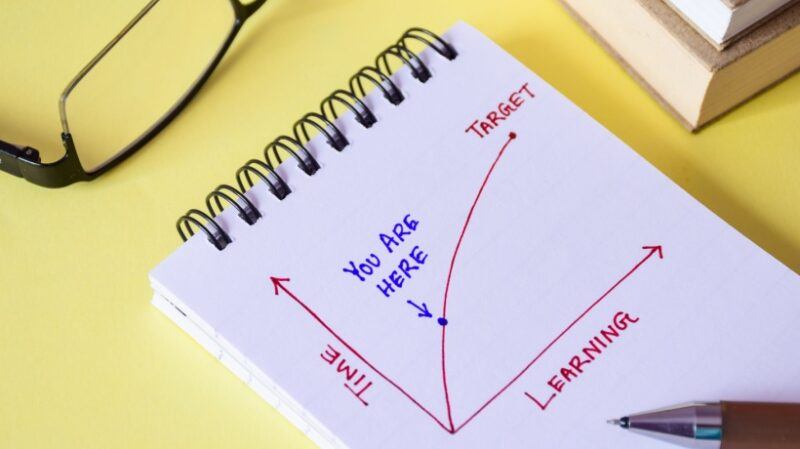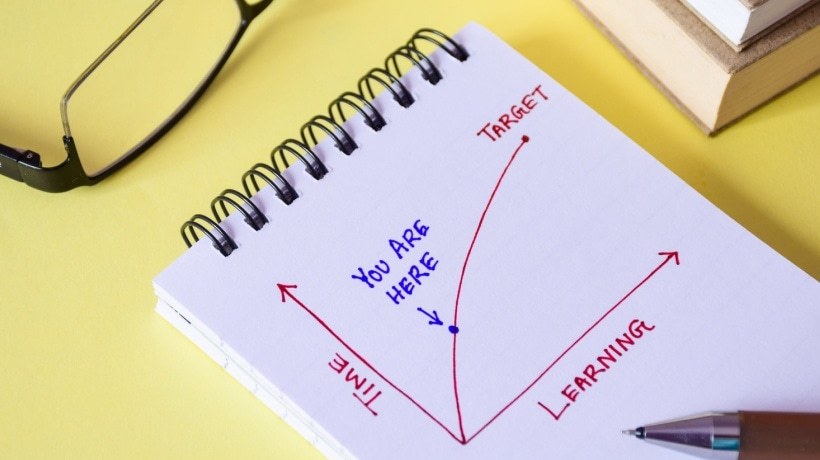
Master the learning curve
In the constantly evolving and rapid business world, employees who are rapid learners with the ability to acquire, preserve and quickly apply new knowledge is the key to the success of a business. One of the most critical and most misunderstood models the learning and development process is learning curve. For learning and development professionals (L&D), it is crucial to know the learning curve model to be able to find the best training programs, improve resource allocation, etc., which, in the end, will lead to the growth of the organization's productivity.
This article immerses the concept of learning curve, its types, applications and its strategic meaning in business L&D. He also explains the use of these aspects in the real business world and best practices and data points to help companies make the most of the concept.
In this article, you will find …
What is the learning curve?
The learning curve is a pictorial representation of the increase in the acquisition of a person's skills over a period of time. This generally indicates that success in the learning process increases with rehearsals or exposure linked to experience, in the sense that with each repetition or additional exposure, time, effort or cost that get lost decrease considerably.
The concept of rehearsal learning, introduced by Hermann Ebbinghaus and used to test human memory and the recall of the end of the 19th century, has since experienced an unprecedented metamorphosis in the pivot force behind various development activities of human capital such as talent training and management as well as the skilful conduct of operations. In the context of the business world, the learning curve positively reflects the cost factor, the time required for employees to get used to and the end result of increased productivity.
Types of learning curves
Knowing the different types of learning curves is essential for L&D professionals because it will help them better judge employees' progress and make the necessary adjustments to their training interventions:
Positive accelerated learning curve
The movement begins slowly, then, at the end, reaches a faster pace. It is a situation where it is necessary to acquire a foundation first, then learning is more effective. An example can be learning advanced software coding languages. Progress starts slowly but accelerate over time. Common in complex tasks that require a fundamental understanding before effectiveness increases.
- Example
Learning advanced software coding languages.
Negative acceleration learning curve
Fast learning is followed by a decrease as the learner gets closer to control. This is the situation where it is easy to obtain the basics of a few principles but difficult to perfect them. An example of this would be to learn to use a basic CRM system. Fast learning is followed by a decrease as the learner gets closer to control.
Linear learning curve
The learning rate is constant throughout the period. It is very rare in real situations but very effective for repetitive tasks. An example is the repetitive models for data entry work.
Plateau learning curve
The person learns quickly at first but becomes slower over a period of time. He tells you that you need to change the teaching technique or motivate students to do better for better learning results. A typical situation could be the sales training where the sketched conversation has worked well until the objections of prospects occur.
Why the learning curve is important in the L&D company
1. Training on return on investment and cost optimization
The learning curve is a major factor which not only delimits the budget for educational prices but also defines economic measures. A steep curve (fast learning) means less time and more productivity; In other words, an organization may recover short -term investment. According to the association for Talent Development (ATD), the average annual training cost per employee is around $ 1,252 for each organization. If the learning curve is not well transported, this can cause a loss of a lot of money even with such substantial training investments.
It has been observed that L&D managers who design their training around the content of the courses and use several channels for strengthening skills can smooth the curve and condense the time necessary for a trainee to become competent. Thus, they can kill two birds with a stone, reducing time and investments insofar as they obtain both the return on investment and the training they wish.
2. Integration and rise in power
In organizations where the evolution of the workforce is rapid, the effectiveness of integration has a strategic role in the operations of the company. A Glassdoor study shows that effective integration increases employees' retention by 82% and their productivity by 70%. The cartography of the learning curve elucidated the transition time of new employees to be fully competent, thus leading to better management of the workflow by making managers know when to expect the involvement of the employee and to what capacity.
3. Performance assessment and continuous improvement
The learning curve serves as a reliable source of feedback on the improvement, efficiency and working speed of employees. By observing how staff members acquire knowledge and the time necessary to master it, the training and development service can decide which learning plan must be modified or cut, thus leading to a more personalized and engaging means for employees to acquire knowledge. This method is effective in that it allows training to have a positive impact and to align with what the company has established as results.
Strategies to improve learning curve in training programs
1. Microlearning for targeted retention
Microlearning is designed to make information simple for the mind by presenting it in smaller and manageable modules, which is faster to absorb and at the same time preserved longer. This model is based on the convincing argument of the Ebbinghaus oblivion curve that 70% of the acquired knowledge will be lost within 24 hours if there is no repetition. Microlearning learning modules are a direct counter in as much as they provide the necessary information at the right time, and they make the learner suffer less cognitive overload so that they also smoothed the learning curve.
2. Apprenticeship based on the scenario
When the trainers use real scenarios and problem solving activities, this allows learners to imagine the springboard of the theory operating in practice. In a declaration of the training industry, learners were 75% more likely to remember the equipment if it consisted of a contextual lesson. This particular method helps the learning curve because it propels learners in the field of practice and makes it practical to learn through practice.
3. Adaptive learning technologies
Adaptive IA learning platforms modify the level of difficulty in activities and how they must be done according to the learner's performance and preferences. Essentially, technology is shaped the platform of each individual trajectory in the most relevant to the learner in that it does not make too easy or too difficult to learn.
4. Retraction loops and continuous evaluation
It has been found that frequent little challenges and coaching sessions have reached the objective of maintaining the committed learner, preventing reversion along the curve and the decrease in abandonments resulting from frustration. The learner therefore always has the awareness and certainty of the level he has reached, because learning is a continuous commitment which continues to give them comments on their progress. Anyone can decide for themselves what they want or can afford financially, as well as the importance or emergency of training.
5. Gamification and motivation
By adding gamified features such as badges, rankings and rewards, it becomes easier to draw on intrinsic motivation. According to a Gallup report, motivated employees are 21% more productive. The learning curve is directly affected by motivation, which also determines the speed and efficiency of learners.
Real applications of the L&D learning curve
Here are the names of certain industry leaders who have managed to use the learning curve to improve their training results:
- Amazon collects complete data on the learning curves of their warehouse staff to rationalize the integration process and minimize errors.
- Microsoft has integrated adaptive learning principles into their integration platforms, which led to the reduction in the necessary training time by 30%.
- General Electric (GE) has adopted learning curve models in technical and leadership training programs to project the preparation of an employee for a key role.
Key measures to monitor the efficiency of the learning curve
To make their training efforts more effective using the learning curve, L&D professionals must monitor the following:
- Competence time
The moment when a learner needs to reach the level of competence. - Knowledge retention rate
The learning that takes place and is preserved after long periods without practice. - Task completion time
The time required at the start of the task by the learner at his completion. - Error rate
A drop in errors following subsequent repetitions. - King of training
Cost compared to the impact of productivity over time.
Conclusion
Faced with constantly evolving technology, markets and business, the adage of “learning or dying” cannot be more relevant. Knowledge is not only an asset at that time, but it is actually the best asset. Understanding the learning curve and its role in the professional development and learning process throughout life is the only key to progressing. It helps not only to optimize performance and save time, but also to create conditions that can withstand all unfavorable situations or crises that may occur in the future. Thanks to hard work and an incessant learning state of mind, you can reach and build a team of versatile and resilient partners capable of managing complex work situations.


